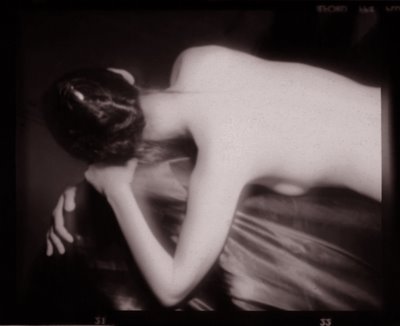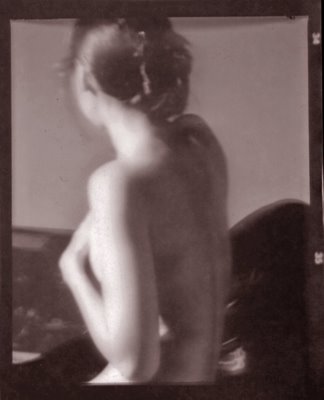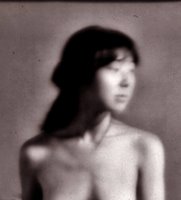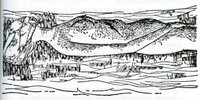Suna no Onna
Wednesday, January 07, 2009

In 1965 in Buenos Aires I went with Susy to see a film I will never forget. I saw it once. Susy was out to educate me and mold me to her desire that I be cultured. She took me to see my first two operas at the Teatro Colón, Sergei Prokofiev's Fiery Angel and Christoph Willibald Gluck's Orfeo ed Uridice. She especially wanted to break my love for westerns and war films. She said I was uncouth. She wanted me to appreciate European art films. My previous experience had not been a good one. I had seen most of Michelangelo Antonioni films because I had the hots for Monica Viti not because I understood the Italian cinematographer's art.

The film I saw with Susy was Hiroshi Teshigahara's 1964 The Woman in the Dunes or Suna no Onna. It was a beautifully startling film. It was as erotic as film as I have ever seen. This film has remained fused in my memory like a bad sunburn at the beach at the end of a hot summer day. No matter where I have gone since, I look at sand in a way I had never done before. I had never seen a film where you could hear (or was it my imagination?) the falling of individual grains of sand.
Sand: An aggregate of rock fragments. Sometimes Including loadstone, tinstone, and more rarely gold dust. Diameter: 2 to 1/16 mm.
The Woman In The Dunes - Kobo Abé

In The Woman in the Dunes the woman was the sexual agressor. It didn't quite hit me then how unlikely this was coming from a then very conservative and male-oriented Japanese society.
He started toward the container on the earthen floor for a little water. Suddenly he heard the breathing of the sleeping woman on the other side of the sunken hearth and looked over. He swallowed his breath, quite forgetting the aching of his eyelids. She was stark naked.

She seemed to float like a blurred shadow before his tear filled eyes. She lay face up on the matting, her whole body, except her head, exposed to view; she had placed her left hand lightly over her lower abdomen, which was smooth and full. The parts that one usually covered were completely bare, while the face, which anybody would show, was concealed under a towel. No doubt the towel was to protect her nose, mouth and eyes from the sand, but the contrast seemed to make the naked body stand out even more.
The Woman In The Dunes - Kobo Abé

In this film sand pours and is in everything. Watching the protagonists drink made me want to drink. I could feel the grit of the sand that was present in everything, in their food, in their drink, in their eyes, in their cavities.
She gathered up the towel with a nervous gesture, and with unexpected energy slapped her face with it two or three times and then, completely turning her back to him, crouched with her knees doubled beneath her and her face to the floor. Was it a bashful movement? This was hardly the place. The man let out a shout as if a dam had given way.
The Woman In The Dunes - Kobo Abé

Halfway through he film I could guess what the man, amateur entomologist Nikei Jumpei already knew. He was in a sandpit with a woman and he would never be able to escape- a Sisyphus, eternally at the bottom of a hole. No great stone to push up just grains with little variations that follow a Gaussian distribution curve with a true mean of 1/8mm.
Then there was a small avalanche of sand.
Apprehensively, he returned to the hut. He went directly to the woman, who had remained crouching. He raised his left hand threateningly. His eyes glittered as he stood there agonizing. But halfway through the gesture, his arm, which he had raised with such purpose, suddenly collapsed. Perhaps he would feel better if he slapped the naked woman. But wouldn't this be just the part he was expected to play? She was waiting for it. Punishment inflicted, in other words, would mean that the crime had been paid for.
The Woman In The Dunes - Kobo Abé

For several years I photographed Helen Yagi. The pictures here I took with my Mamiya RB modified to be a pinhole camera. Looking back I can understand now that Helen was the best subject I ever had and that any limitations that I may have felt in taking her photographs were my own personal limitations. When she found out about my love for the film The Woman in The Dunes she said, "Alex why don't we bring bucketfulls of sand up to your studio and shoot scenes from the film?" I thought, at the time that Helen was crazy. How were we going to cart all that sand up three floors and then get rid of it? Of course she was not crazy at all. I simply could not see. Just like Nikei Jumpei, I had no vision at the bottom of my sandpit.

A few days ago while browsing through the fiction section at Chapters I found Kobo Abé's The Woman in the Dunes translated by E. Dale Saunders and illustrated by Machi Abé. It is a Vintage International edition, 1991.
more






